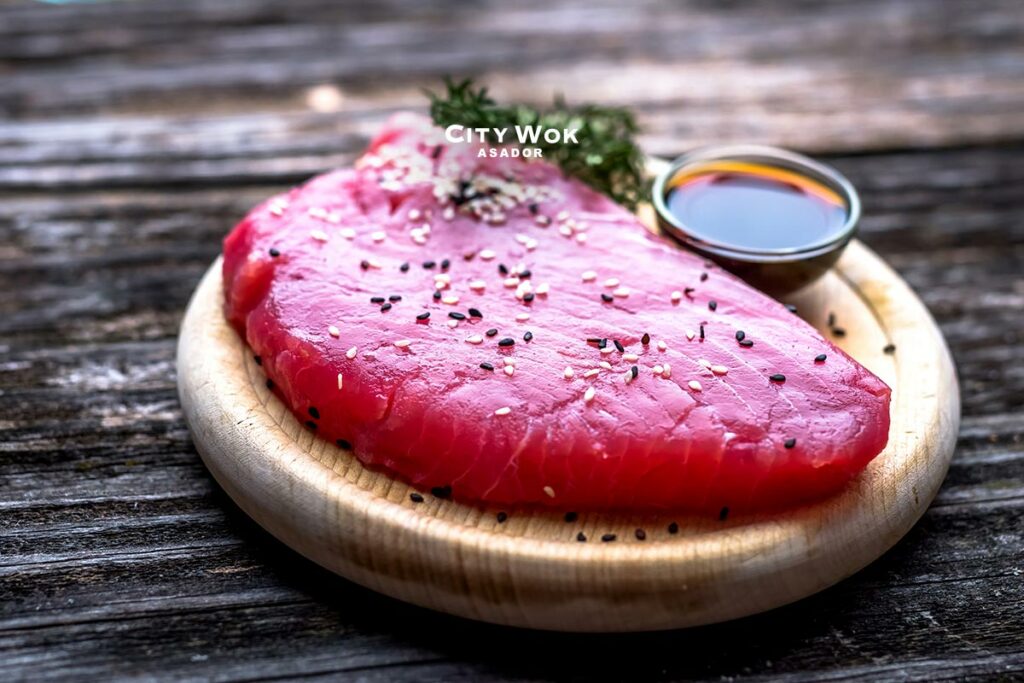Beneficios del pescado azul

Muchas veces hemos escuchado la distinción entre pescados azules y pescados blancos, pero ¿realmente sabemos las diferencias? Hoy en Asador City Wok Málaga vamos a hablarte de los beneficios del pescado azul.
La terminación de pescado azul es una definición científica que delimita a los pescados que han tenido alguna vez en su vida un 5% de grasa, aunque puede haber otros como las anguilas que llegan a tener un 10% y también se consideran pescado azul. Por lo tanto, cuando hablamos de pescados blancos decimos que son aquellos que oscilan un nivel graso del 1 – 2%.
Beneficios del pescado azul
Ahora que tenemos claro qué tipo de pescado es el que se clasifica dentro de pescado azul, hablaremos de las grandes propiedades que aportan a nuestro organismo. Aunque han habido diversas especulaciones sobre este alimento y actualmente muchas personas lo hayan eliminado de sus comidas por la posibilidad de contener un metal pesado, el mercurio, el pescado azul es esencial para nuestra dieta por lo que la solución no es esta sino controlar las emisiones de contaminación por combustibles.
Ahora bien, decimos que es tan importante para nuestro organismo porque:
- Su grasa insaturada aporta grandes beneficios a nuestra salud cardiovascular.
- Contiene Omega 3 recomendado para ayudar a establecer unos niveles normales de colesterol y triglicéridos.
- Reduce la tensión arterial.
- Ayuda a prevenir infartos.
- Es una gran fuente de vitamina A, B1, B6, B12 y D.
- Rico en minerales como el calcio y el fósforo.
- Es pobre en carbohidratos.
- Nos aporta grandes cantidades de proteínas.
Numerosos estudios han determinado que sus ácidos grasos esenciales como el DHA, EPA o ALA disminuyen el riesgo coronario en un 30% si se consume este pescado entre dos y tres veces por semana.
¿Cuáles son los más comunes?
Aunque en la década de los 60 y los 70 el pescado azul apenas se consumía por su elevado contenido en grasas, actualmente, la sociedad europea lo tiene muy integrado en su dieta siendo los más cocinados:
La caballa
También llamado estornino en Andalucía se comercializa fresco durante todo el año, aunque su captura se lleva a cabo en los meses de febrero hasta abril en la zona del mar Cantábrico.
El jurel
Es un pescado azul buscado por su pequeño tamaño que se encuentra en el mar Mediterráneo, Atlántico Oriental y desde Islandia a Noruega y lo podemos encontrar a un precio bastante económico.
La sardina
Su tamaño es similar al del jurel y la podemos encontrar en lagunas o estuarios costeros, el mar Atlántico Oriental, desde Islandia a Noruega o en el Mar del Norte. Es un pescado que se mantiene fresco durante poco tiempo por lo que suele consumirse también en conserva.
El boquerón
Aunque se hace distinción entre el boquerón y la anchoa, son el mismo pescado y lo podemos encontrar en el Atlántico Oriental o desde Noruega a Sudáfrica, la costa de África y Madagascar.
El atún
Es uno de los más buscados en la gastronomía mediterránea y se incluye en muchas de sus recetas. También es muy apreciado por la cocina oriental donde se utiliza para cocinar sushi y tacos de pescado crudos. Vive en el Mediterráneo y la costa atlántica de América desde Brasil a Canadá y debido a su pesca masiva, la Unión Europea ha establecido límites de pesca para esta especie.
Tenemos varios ingredientes para que escojas los que más te gustan y personalizar los platos a tu manera. Descubre todo lo que te espera en tu restaurante buffet libre en Málaga. Disfrutarás de una gran velada junto a tu familia y/o amigos. Podrás repetir todas las veces que quieras y combinar los platos a tu manera. ¡Deja volar tu creatividad y disfruta en Asador City Wok Málaga!